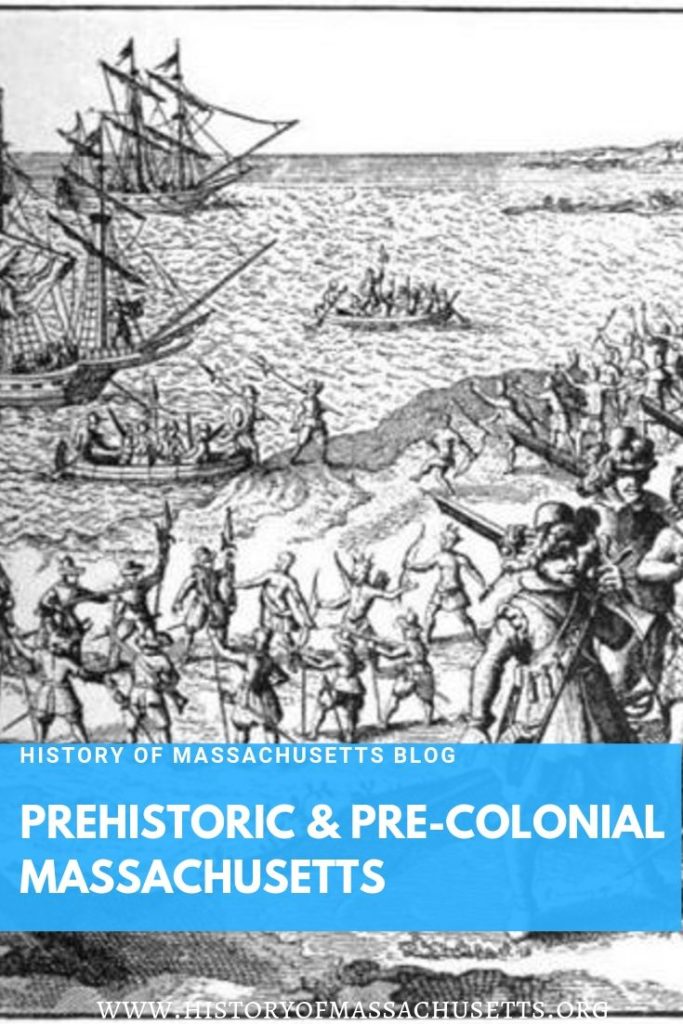Massachusetts is so much older than we realize. The land that it occupies was created millions of years ago and was once home to volcanoes, dinosaurs, mammoths and Paleoindians.
It was later transformed by glaciers, populated by indigenous peoples and explored by a handful of brave explorers during the pre-colonial period.
The following is an overview of important events in prehistoric and pre-colonial Massachusetts:
Geological History of Massachusetts:
The geological history of Massachusetts is vast. The land that Massachusetts and much of New England now occupies was once a part of an ancient continent called Avalonia that later collided and merged with another continent called Laurentia to form the North American continent that we know today.
Shortly after, various dinosaurs roamed the land and left their footprints in the mud and shale of the prehistoric land before eventually going extinct around 65 million years ago.
During the last Ice Age, the topography and landscape of Massachusetts was transformed by glaciers. Many notable features of New England’s landscape were created during this time, such as the many drumlin hills, kettle hole ponds, harbors, rocky outcrops as well as the peninsulas of both the north and south shores of Massachusetts.
Ice Age animals, such as mammoths and mastadons, roamed the land during this time until they either went extinct or were overhunted by the early inhabitants of Massachusetts.
Eventually, as the climate warmed and the glaciers retreated, the Massachusetts landscape began to slowly transform until it started to resemble what it looks like today.
First Inhabitants of Massachusetts:
The first known inhabitants of Massachusetts were Paleoindians who entered the region around 12,000 years ago, after the glaciers began to melt and retreat, to hunt the ice age animals that lived there. They were nomadic people who set up small camps as they followed the herds of migrating animals.
The Paleoindians continued to move around the region and soon the number of their settlements began to increase. Eventually the population became widespread across much of the continent. These indigenous people began to form tribes that we now recognize as Native American tribes.
When traders and early explorers first began to visit North America, they made contact with these Native Americans and began to learn more about the continent from them.
Early Exploration of Massachusetts:
A handful of French, Italian and English explorers visited Massachusetts and/or the Northeast between the 15th and 17th centuries. Most of these Massachusetts explorers were looking for a suitable location for a colony while others were merely looking for a passageway to the east.
The Native-Americans living in New England at the time had mixed reactions to these explorers. Some tribes welcomed them with open arms while other tribes were less friendly, which made exploration of the region treacherous at times.
Even though most of these expeditions were unsuccessful, they laid the groundwork for future English and French colonization in North America during the 17th century.
Sources:
LeVert, Suzanne and Tamra B. Orr. Massachusetts. Marshall Cavendish Benchmark. 2009

